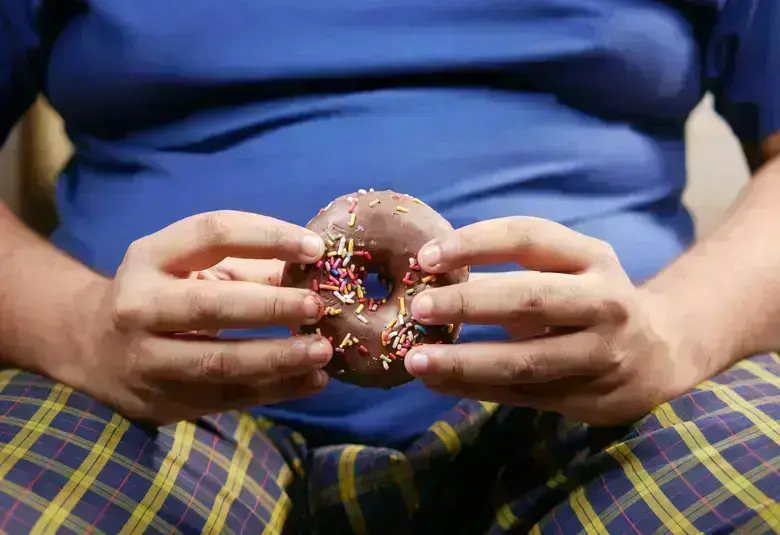Neuroplasticity, synaptic dysfunction, and activation of the HPA axis are among areas of active research in efforts to understand the pathophysiology underlying major depressive disorder and its potential treatment-resistance, Maurizio Pompili (Sapienza University of Rome, Italy) told CINP 2021 Virtual.
CINP 2021 온라인 학회에서 마우리치오 폼필리(Maurizio Pompili, 이탈리아 로마 라 사피엔차 대학교) 교수는 주요우울장애 및 치료 저항성의 원인이 되는 병태생리학적 특성을 이해하기 위해 신경가소성, 시냅스 기능 장애, HPA 축 활성화 등에 관한 연구가 진행되고 있다고 말했습니다.
Though we have much to learn about the factors that underly treatment resistance in major depressive disorder (MDD), there is no lack of certainty about the unmet clinical need, Ana González-Pinto (Hospital Universitario de Álava, Spain) said when introducing the symposium.
이 심포지엄의 소개를 맡은 아나 곤살레스-핀토(Ana González-Pinto, 스페인 알라바 대학병원) 교수는 주요우울장애(MDD)의 치료 저항성을 초래하는 요인을 이해하려면 여전히 많은 연구가 필요한 반면, 충족되지 않은 임상 현장의 수요는 명확하게 드러나고 있다고 말했습니다.
Between 30% and 40% of people with MDD do not respond to first or second-line antidepressant treatment, and only 17% respond at the third treatment step.1,2
MDD 환자 중 30~40%는 1차 또는 2차 항우울제 치료에 반응을 보이지 않으며, 17%만이 3차 치료 단계에서 반응을 보입니다.1,2
Optimizing early treatment is critical to full symptomatic and functional recovery4
증상 및 기능을 완전히 회복하려면 초기 맞춤화 치료가 매우 중요합니다4
With each unsuccessful treatment, there is less chance of remission and a greater risk of relapse.2,3 Compared with treatment-responsive MDD, depression that is resistant is associated with increased number and length of depressive episodes, and greater risk of hospitalization and suicidal behavior.5-10
치료 실패가 거듭될수록 질환 관해(remission)의 가능성은 낮아지고 재발 위험은 높아집니다.2,3 치료에 반응하는 MDD 환자에 비해 치료에 저항성을 보이는 우울증 환자는 우울증 삽화의 빈도와 기간이 증가하고 입원 및 자살 행동의 위험 또한 높아집니다.5-10
So there is recognition that optimizing early treatment is crucial to achieving full symptomatic and functional recovery.4
따라서 증상 및 기능을 완전히 회복하려면 초기에 맞춤화 치료를 진행하는 것이 중요하다는 인식이 형성되고 있습니다.4
Insights from altered plasticity and hippocampal volume
변화한 가소성 및 해마 부피에서 얻는 통찰
Elevated activity of the hypothalamic-pituitary-adrenal (HPA) axis is strongly implicated in depression, and, although varying in extent across subtypes, may be a major link between psychiatric and comorbid physical conditions such as diabetes and coronary heart disease.11
시상하부 뇌하수체 부신(HPA) 축의 활동 증가는 우울증과 밀접한 관련이 있으며, 하위 유형별로 정도는 다르게 나타날 수 있지만 당뇨와 관상 동맥 심장 질환 등의 신체적 동반 증상과 정신 질환 증상 간의 중요한 연결 고리일 수 있습니다.11
Depression is also associated with the neural atrophy and decreased synaptic connectivity that lead to reduced synaptic density,12 Maurizio Pompili told CINP 2021 Virtual.
또한, 우울증은 시냅스 밀도 감소를 초래하는 신경 위축 및 시냅스 연결성 저하와도 관련이 있다고12 CINP 2021 온라인 학회에서 마우리치오 폼필리 교수가 설명했습니다.
Decreased neuroplasticity, which seems to be part of the brain’s morphological and functional adaptation to stress, is also linked to depression and its outcome.13
스트레스에 대한 뇌의 형태적 및 기능적 변화 중 일부로 보이는 신경가소성 저하도 우울증 및 그에 따른 결과와 관련이 있습니다.13
Indeed, reduced hippocampal volume , which is found in patients who have had several episodes of depression, may predispose patients to a poor response to treatment.14 Glutamate is the main neurotransmitter regulating plasticity, Professor Pompili reported.
실제로 몇 차례의 우울증 삽화를 겪은 환자에게서 관찰되는 해마 부피 감소는 환자의 치료 반응성을 낮출 수도 있습니다.14 글루타메이트는 가소성을 조절하는 주요 신경 전달 물질이라고 폼필리 교수는 설명했습니다.
We seek to understand the pathophysiology that sets treatment-resistant depression apart from responsive MDD
학계는 치료 저항성 우울증과 치료 반응성 MDD를 구분 짓는 병태생리학적 요인을 파악하기 위해 노력하고 있습니다
This is perhaps one piece of the jigsaw in our very incomplete understanding of the pathophysiology underlying treatment resistant depression. And it may relate to the fact that stress reduces neogenesis in the rodent hippocampus.15
이는 치료 저항성 우울증의 병태생리학적 요인을 이해하는 하나의 퍼즐 조각이 될 수 있습니다. 또한, 스트레스가 설치류의 해마에서 조직 재생을 저하시킨다는 사실과도 연관이 있을 수 있습니다.15
NMDA receptor and glutamate
NMDA 수용체와 글루타메이트
There is also some evidence that resting state functional connectivity of the subcallosal cingulate cortex differs in patients with remitted MDD from those with treatment resistance.16 Interestingly, depression subtypes defined using this aspect of functional connectivity seemed to have different chances of remission when treated with the first-line options of Cognitive-Behavioral Therapy or antidepressant medication.
치료 저항성을 보이는 MDD 환자와 차도를 보이는 MDD 환자 간에 뇌량하 대상피질의 휴면 상태 기능적 연결성이 다르게 나타난다는 연구 결과도 있습니다.16 흥미롭게도 이러한 기능적 연결성을 이용해 구분한 우울증 하위 유형 집단별로 인지-행동 치료 또는 항우울제 치료를 이용한 1차 치료에 따른 질환 관해 확률이 다르게 나타나는 것으로 보입니다.
Professor Pompili also drew attention to increasing understanding of the role of the N-methyl-D-aspartate (NMDA) receptor and the glutamate system. Post mortem, NMDA receptor subunits are found to be different in people who have had MDD, and depression may be associated with NMDA receptor hyperfunction in subcortical regions and hypofunction in cortical areas,17 he reported.
또한, 폼필리 교수는 N-메틸-D-아스파르트산염(NMDA) 수용체 및 글루타메이트의 역할에 대한 이해도가 높아지고 있다는 점에도 주목했습니다. 사후 연구 결과에 따르면 NMDA 수용체 하위 단위는 MDD를 겪은 사람에게서 다르게 나타나며, 우울증이 피질하 영역의 NMDA 수용체 기능 항진 및 피질 영역의 기능 저하와 관련이 있을 수 있다고17 폼필리 교수는 설명했습니다.
The satellite symposium was supported by the Janssen Pharmaceutical Companies of Johnson & Johnson in EMEA
이 위성 심포지엄은 EMEA 존슨앤드존슨 얀센 제약 부문(Janssen Pharmaceutical Companies of Johnson & Johnson in EMEA)의 지원으로 개최되었습니다.
Our correspondent’s highlights from the symposium are meant as a fair representation of the scientific content presented. The views and opinions expressed on this page do not necessarily reflect those of Lundbeck.




